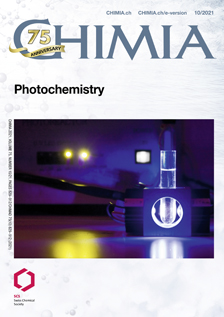Photophysics and Charge Generation in Low Energy-offset Blends for Organic Solar Cells
DOI:
https://doi.org/10.2533/chimia.2021.862PMID:
34728013Keywords:
Charge recombination, Charge transfer, Electronic state hybridization, Organic solar cells, Ultrafast spectroscopyAbstract
The power conversion efficiency of organic solar cells has seen a huge improvement in recent years with state-of-the-art solar cells showcasing efficiencies of ~18.5 %, which is approaching the performance of inorganic and hybrid-perovskite solar cell technologies. This improvement can be mainly attributed to the discovery of highly efficient donor:acceptor blends with a near-zero energetic offset between the molecular orbital levels of the donor and the acceptor component. A distinctive feature of the high efficiency, low energy-offset blends is that they exhibit a concomitant increase in the short-circuit density and the open-circuit voltage of the solar cell. High open-circuit voltage results from the reduced photon energy loss in the exciton dissociation step, while a high short-circuit current density can be attributed to an efficient charge generation process. The reasons for the efficient exciton dissociation and subsequent separation of Coulomb bound electron-hole pair at negligible driving force is not well understood and, in this short review, we highlight recent results which shed light on the mechanism of charge generation in low energy-offset blends.
Downloads
Published
Issue
Section
License
Copyright (c) 2021 Rishi Shivari, Natalie Banerji

This work is licensed under a Creative Commons Attribution 4.0 International License.







